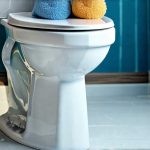Estrogen’s Intricate Relationship with Women’s Bladder Health
For many women, bladder issues are more than just an occasional inconvenience; they can significantly impact quality of life, leading to anxiety, social isolation, and a constant need to plan around bathroom availability. While often dismissed as a normal part of aging or motherhood, the underlying causes of urinary problems in women are complex and frequently interwoven with hormonal changes, particularly those related to estrogen. Understanding the role estrogen plays is crucial not only for effective treatment but also for proactive management and prevention. This article will delve into how this vital hormone impacts bladder function, explore current medication approaches that consider estrogen’s influence, and highlight emerging research in this fascinating area of women’s health.
Traditionally, bladder issues were often attributed solely to factors like weakened pelvic floor muscles or lifestyle choices. However, increasingly sophisticated research reveals a strong link between declining estrogen levels – experienced naturally during menopause, after childbirth, or due to certain medical treatments – and the development of urinary urgency, frequency, and incontinence. Estrogen isn’t just about reproductive health; it has widespread effects throughout the body, including the urogenital tract. This means that as estrogen diminishes, the tissues of the bladder and urethra undergo changes that can directly contribute to these bothersome symptoms. It’s important to remember that every woman experiences hormonal fluctuations differently, meaning the severity and manifestation of bladder problems will vary considerably.
The Urogenital Tract & Estrogen: A Delicate Balance
Estrogen profoundly impacts the structure and function of the urogenital tract – encompassing the bladder, urethra, and pelvic floor muscles. It acts as a key regulator in maintaining the health and integrity of these tissues. Specifically, estrogen receptors are found throughout this region, demonstrating its direct influence on cellular activity. When estrogen levels decline, several changes occur:
- The urothelium, the lining of the bladder, can become thinner and less resilient. This impacts its barrier function, potentially increasing sensitivity and urgency.
- The urethra, the tube that carries urine out of the body, loses some of its elasticity and protective layer, making it more susceptible to irritation and infection.
- Blood flow to these tissues decreases, further compromising their health and ability to repair themselves.
- The pelvic floor muscles, which support bladder function, can weaken due to hormonal changes impacting collagen production and muscle tone.
These combined effects create a cascade of events that contribute to urinary problems. It’s not simply about a loss of estrogen; it’s about the disruption of a carefully balanced system. Restoring some degree of hormonal balance – or mitigating its effects – is therefore often central to effective bladder medication strategies for women, particularly post-menopausally. It’s also important to note that while localized estrogen therapies exist (discussed below), systemic hormone replacement therapy isn’t always recommended and should be discussed thoroughly with a healthcare provider due to potential risks.
The interplay between estrogen and the nervous system is another crucial consideration. Estrogen influences neurotransmitters involved in bladder control, potentially impacting both the detrusor muscle (which controls bladder emptying) and the sensation of needing to urinate. This neurological connection explains why some women experience a heightened sense of urgency even with relatively small amounts of urine in their bladders. Understanding this complex relationship is essential when choosing appropriate treatment options.
Estrogen-Based Therapies for Bladder Dysfunction
Localized estrogen therapy, typically administered as vaginal creams, rings, or tablets, has emerged as a valuable tool in managing certain types of bladder dysfunction, particularly urge incontinence and overactive bladder symptoms linked to estrogen deficiency. The key benefit is that it delivers estrogen directly to the urogenital tissues, minimizing systemic absorption and reducing potential side effects associated with hormone replacement therapy.
- Vaginal Estrogen Creams: These are applied intravaginally, usually nightly for a period of weeks or months, then tapered down to maintenance doses. They help restore the thickness and elasticity of the urethral lining.
- Vaginal Estrogen Rings: These flexible rings are inserted into the vagina and slowly release estrogen over several months, providing continuous low-dose therapy.
- Vaginal Estrogen Tablets: These tablets dissolve in the vagina, delivering estrogen directly to the tissues.
It’s important to understand that localized estrogen isn’t a cure-all; it’s often most effective when combined with other strategies like pelvic floor muscle exercises (Kegels) and behavioral therapies. The choice of delivery method – cream, ring, or tablet – depends on individual preferences, medical history, and the severity of symptoms. A healthcare provider will guide this decision.
While generally well-tolerated, localized estrogen therapy does have potential side effects, although they are usually mild. These can include vaginal irritation, spotting, or breast tenderness. Regular monitoring by a physician is essential to ensure safe and effective use. It’s also crucial to note that women with a history of estrogen-sensitive cancers should carefully discuss the risks and benefits of estrogen therapy with their oncologist before starting treatment.
Beyond Estrogen: Combining Approaches for Comprehensive Care
While estrogen-based therapies can address the physiological changes related to hormonal decline, they are rarely used in isolation. A comprehensive approach to bladder medication often involves combining these therapies with other interventions tailored to the individual’s specific needs. This integrated strategy acknowledges that urinary problems are often multifactorial – influenced by hormones, muscle strength, neurological factors, and lifestyle habits.
- Pelvic Floor Muscle Training (Kegels): Strengthening the pelvic floor muscles can improve bladder control and reduce leakage, regardless of hormonal status. A physical therapist specializing in pelvic health can provide guidance on proper technique.
- Behavioral Therapies: These include techniques like bladder retraining – gradually increasing the intervals between urination – and fluid management strategies to minimize urgency and frequency.
- Pharmacological Interventions: Medications such as antimuscarinics or beta-3 agonists can help reduce bladder contractions and improve capacity, but they don’t address the underlying hormonal changes. These are often used in conjunction with estrogen therapy when appropriate.
The goal is to create a personalized treatment plan that addresses all contributing factors. This requires open communication between the patient and their healthcare provider, as well as a willingness to explore different options until an effective strategy is found. It’s vital to avoid self-treating and always seek professional guidance.
Emerging Research & Future Directions
Research into the connection between estrogen and bladder health continues to evolve, with several promising avenues being explored. One area of focus is identifying biomarkers that can predict which women are most likely to benefit from estrogen therapy. This would allow for more targeted treatment approaches, maximizing effectiveness while minimizing unnecessary interventions.
Furthermore, scientists are investigating novel ways to deliver estrogen locally – such as using nanotechnology or sustained-release formulations – to improve efficacy and reduce side effects. Researchers are also exploring the role of selective estrogen receptor modulators (SERMs), which can selectively activate estrogen receptors in certain tissues while blocking them in others, potentially offering a more nuanced approach to hormonal therapy.
Finally, there’s growing interest in understanding how lifestyle factors – such as diet, exercise, and stress management – interact with estrogen levels and bladder function. Proactive self-care strategies, including maintaining a healthy weight, staying adequately hydrated, and managing stress, can play a significant role in preventing and managing bladder problems. The future of bladder medication for women lies in a holistic approach that recognizes the intricate interplay between hormones, physiology, lifestyle, and individual needs.
Disclaimer: This article is intended for informational purposes only and does not constitute medical advice. Please consult with a qualified healthcare professional for any health concerns or before making any decisions related to your health or treatment.





















